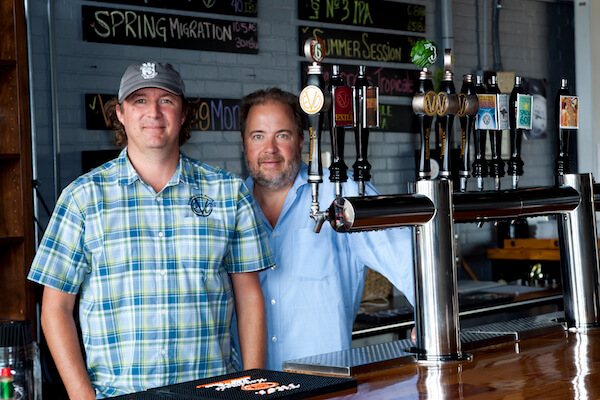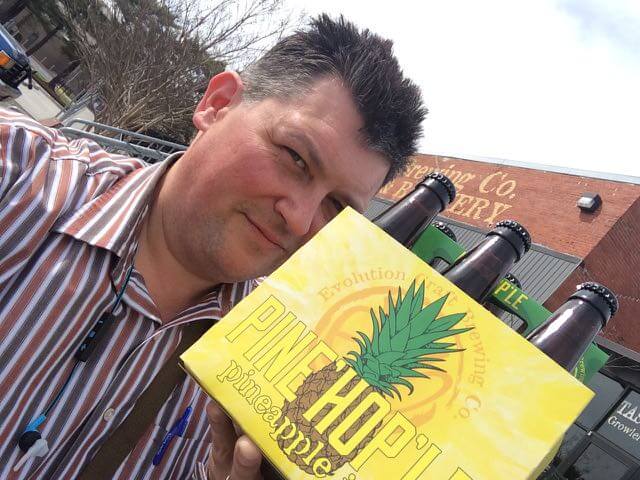If you’re subscribed to this, you know Pinehople is out. We spoke about it on the Beer with Strangers podcast and it is getting more than a little traction around the Internet. But if this is the first you’re hearing of it, let me bring you up to speed: Pinehople is the newest release from Evolution Craft Brewing in Salisbury. It is a Pineapple IPA that balances out the fruit with the bitter while letting you taste both. That means the fruit flavors aren’t subtle but neither are the hops, which is why people are kind of excited about it.
The excitement is at least as interesting to me as its object. The fact that beer writers are covering the release, or at least mentioning it says a lot more about Evolution as a brewery than it does about the growing interest in fruity IPAs. Don’t get me wrong, the growth of fruit IPAs is something of a phenomenon. It has to do with people who have developed a passion for IPAs exploring the complexities the style affords. As brewers get even bolder with yeast and hop combinations IPA fans respond. What separates Pinehople isn’t the premise, it is the history.

Building a beer culture
Evo already has a name for great IPAs. If you’re an Eastern Shore Craft Beer drinker, Lot 3 (which celebrates its seventh birthday this month) likely was your gateway beer, or at least your gateway Maryland beer. Given that they have the credibility, when word gets out that they have a new IPA, people naturally expect that the beer is going to be astounding. And the Pinehople IPA doesn’t disappoint.
Since the brewery opened Evo has worked on kind of a stair step model. They take whatever success they have, make it stable and then grow from their. They opened with just the four “flagship-type” beers: Lucky 7, Lot 3, Primal Pale and Exile. Rise up was a seasonal that became too popular to discontinue. Similarly Lot 6’s popularity drove its production more so than a plan for growth. On the face of it, you might expect a beer like Pinehople to be a seasonal one off, but it is out in bottles all over the East Coast and, as the summer comes on, might just be something a little more.

Playing with flavors like pineapple
Seasonals are about taking chances, about acting on impulses and dispositions. They can be huge successes or marginal once, but every craft beer finds a fan. The trick is to find enough fans to give the beer legs. Evo’s Tom Knorr talked about that process, figuring out what should stay and what should go, what should get wide releases and what should be a taproom special.
Since we were on the subject of playing with flavors, naturally the conversation turned to the now-famous Migration series. Large format beers weren’t all the rage when Evo inaugurated Migration, although they weren’t unheard of either. Tom said the idea was to choose a kind of oak and build a beer to complement it. Since then they’ve built upon that notion using Chardonnay, Rum and Bourbon barrels respectively throughout the year.
Although there always is plenty of demand for the beer, they’ve elected over the years to keep the batches small rather than push the envelope, whereas they might be a little more liberal with the non-aged beer production volume.
“These beers really hold up well,” Tom said of the Migration series, which are compared side by side every year. Tom said he compares not just how well an individual beer tastes as it ages, but also how it compares to later variations. Each year they use different barrels. For example, one year the bourbon might be Makers Mark and the next Four Roses. Even though the beer is exactly the same when it goes into the barrel, what comes out will have different characters.
